1 Product overview
1.1 Technical specification
Table 1. Technical specification
1.2 System block diagram
Figure 1. VL53L1X block diagram
1.3 Device pinout
Figure 2. VL53L1X pinout (bottom view)
Table 2. VL53L1X pin description
1.4 Application schematic
Figure 3. VL53L1X schematic
Table 3. Suggested pull up and series resistors for I2C Fast mode
2 Functional description
2.1 System functional description
Figure 4. VL53L1X system functional description
2.2 System state machine description
Figure 5. System state machine
2.3 Customer manufacturing calibration flow
2.4 Ranging description
2.5 Key parameters
2.5.1 Distance mode
Table 4. Maximum distance vs. Distance mode under ambient light
2.5.2 Timing budget (TB)
Figure 6. Maximum distance and repeatability error vs. timing budget
2.6 Power sequence
2.6.1 Power up and boot sequence
Figure 7. Power up and boot sequence
Figure 8. Power up and boot sequence with XSHUT not controlled
2.7 Ranging sequences
Figure 9. Autonomous sequence
2.8 Sensing array optical center
Table 5. Optical center specification
Figure 10. Optical center specification
3 Ranging performances
3.1 Test conditions
3.2 Accuracy, repeatability, and ranging error definitions
3.2.1 Accuracy definition
3.2.2 Repeatability definition
3.2.3 Ranging error definition
3.3 Minimum ranging distance
3.4 Performances in dark conditions
Table 6. Performances in dark conditions
3.5 Performances in ambient light conditions
3.5.1 Long distance mode
Table 7. Typical performances in ambient light with long distance mode
3.5.2 Short distance mode
Table 8. Typical performances in ambient light conditions with short distance mode
3.6 Performances in partial ROI in dark conditions
Table 9. Typical performances in partial ROI in dark conditions
4 Control interface
Figure 11. Data transfer protocol
Figure 12. VL53L1X I2C device address: 0x52
Figure 13. VL53L1X data format (write)
Figure 14. VL53L1X data format (read)
Figure 15. VL53L1X data format (sequential write)
Figure 16. VL53L1X data format (sequential read)
4.1 I2C interface - timing characteristics
Table 10. I2C interface - timing characteristics for Fast mode (400 kHz)
Figure 17. I2C timing characteristics
4.2 I2C interface - reference registers
Table 11. Reference registers
Table 12. 32-bit register example
5 Electrical characteristics
5.1 Absolute maximum ratings
Table 13. Absolute maximum ratings
5.2 Recommended operating conditions
Table 14. Recommended operating conditions
5.3 ESD
Table 15. ESD performances
5.4 Current consumption
Table 16. Power consumption at ambient temperature
5.5 Digital I/O electrical characteristics
Table 17. Digital I/O electrical characteristics
6 Outline drawing
Figure 18. Outline drawing (page 1/3)
Figure 19. Outline drawing (page 2/3)
Figure 20. Outline drawing (page 3/3
7 Laser safety considerations
Figure 21. Class 1 laser product label
8 Packaging and labeling
8.1 Product marking
Figure 22. Example of prototype marking
8.2 Inner box labeling
8.3 Packing
8.4 Tape outline drawing
Figure 23. Tape outline drawing
8.5 Pb-free solder reflow process
Table 18. Recommended solder profile
Figure 24. Solder profile
8.6 Handling and storage precautions
8.6.1 Shock precaution
8.6.2 Part handling
8.6.3 Compression force
8.6.4 Moisture sensitivity level
8.7 Storage temperature conditions
Table 19. Recommended storage conditions
9 Ordering information
Table 20. Order codes
10 Acronyms and abbreviations
Table 21. Acronyms and abbreviations
11 ECOPACK®
12 Revision history
Table 22. Document revision history


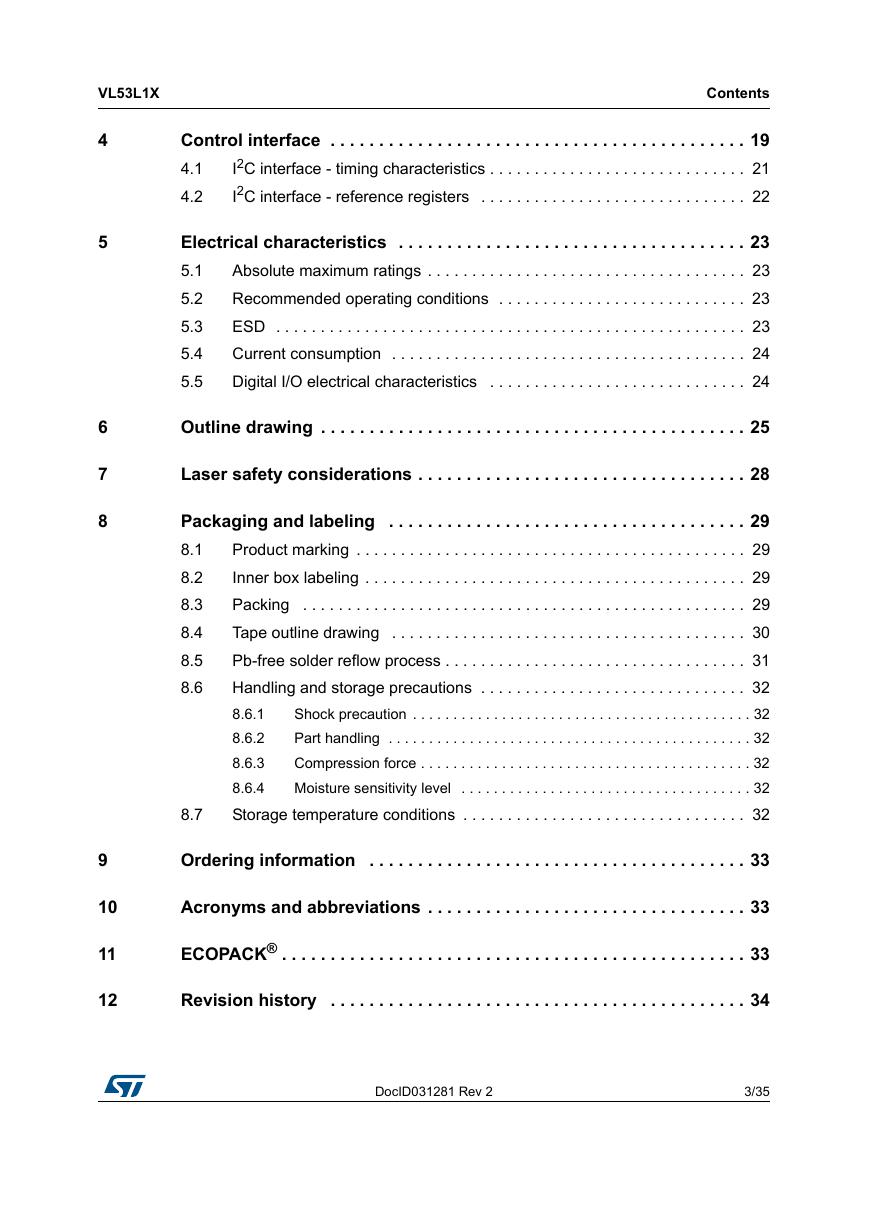
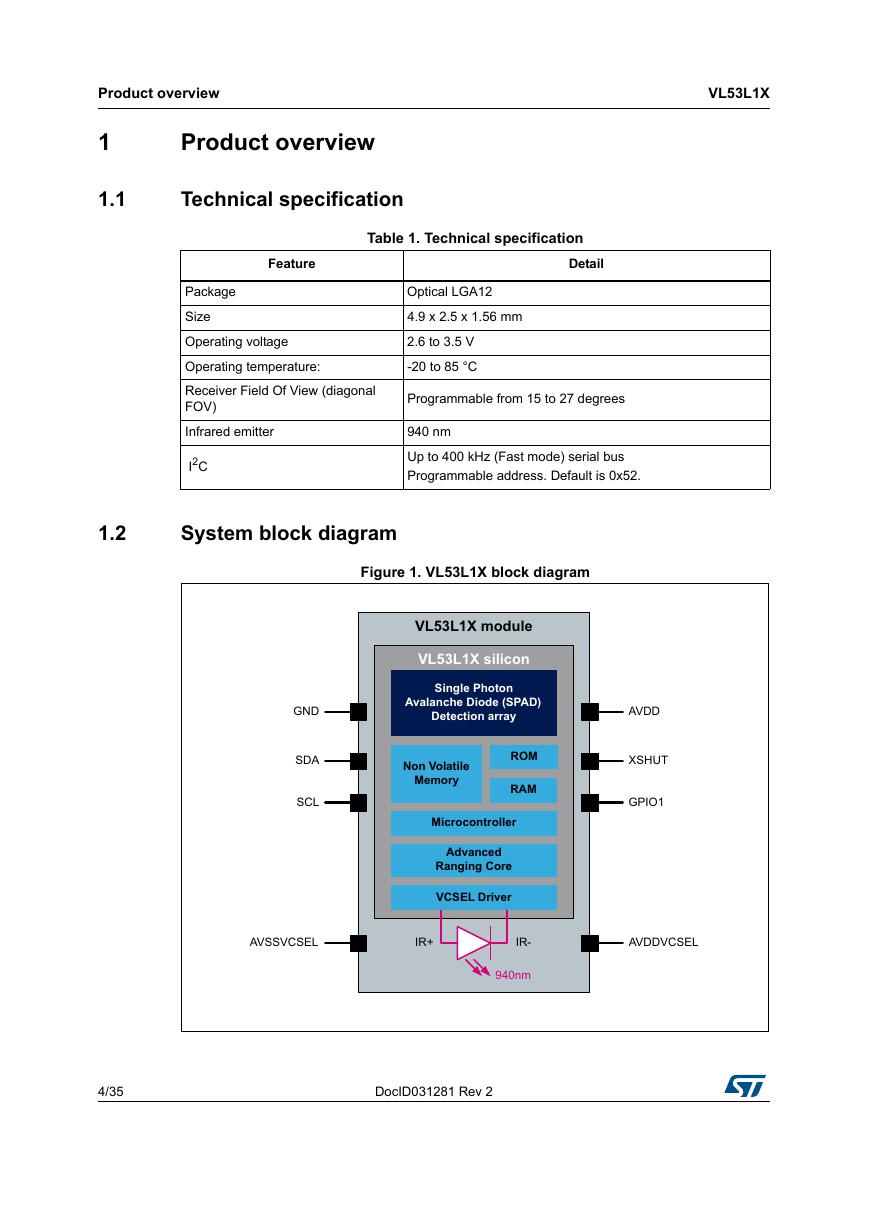
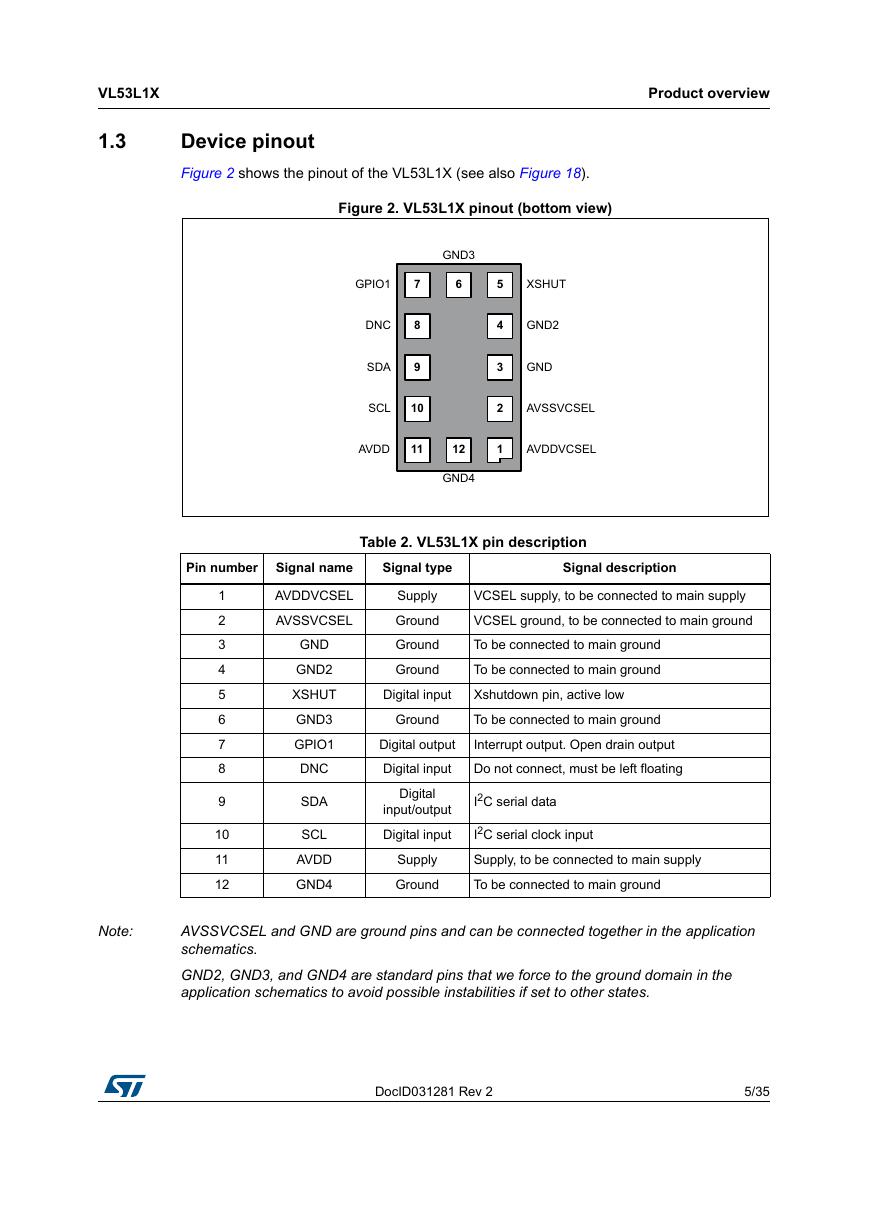
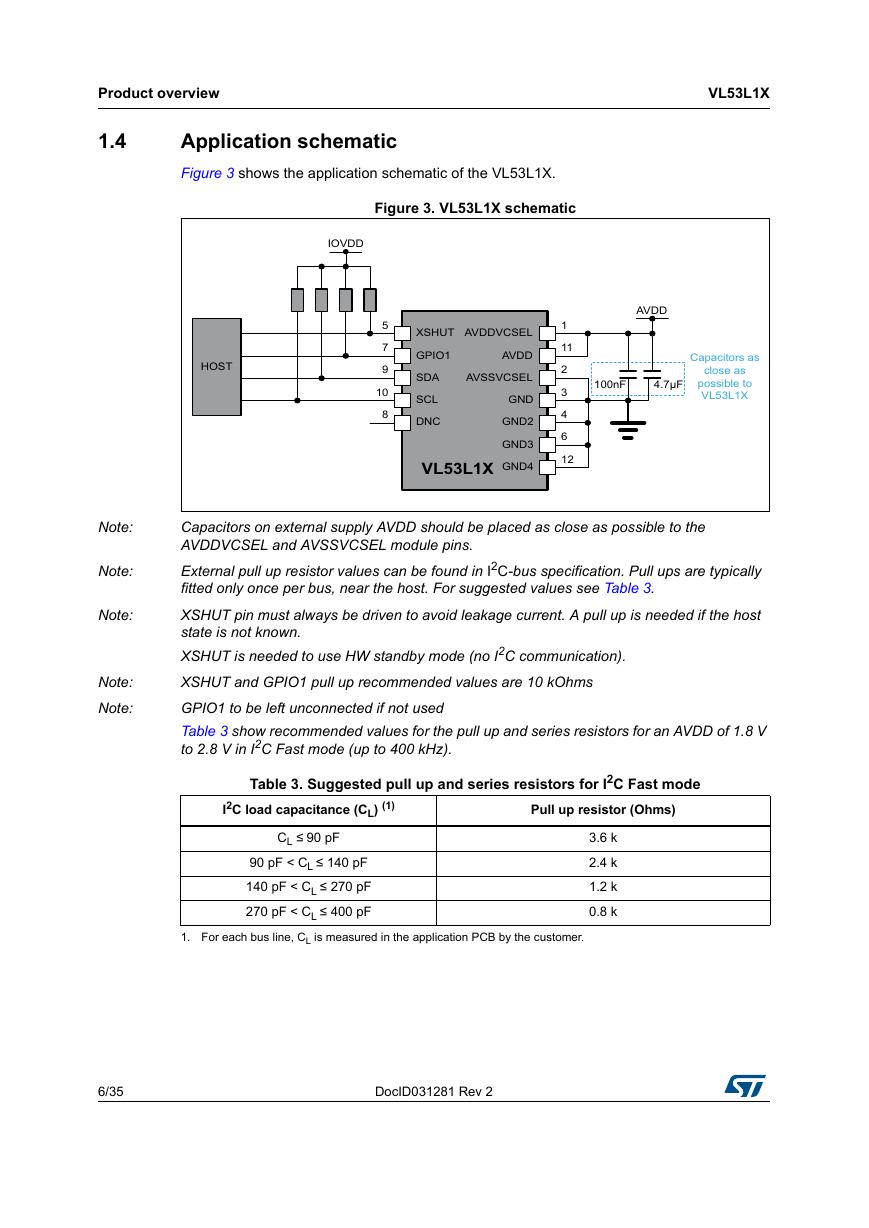
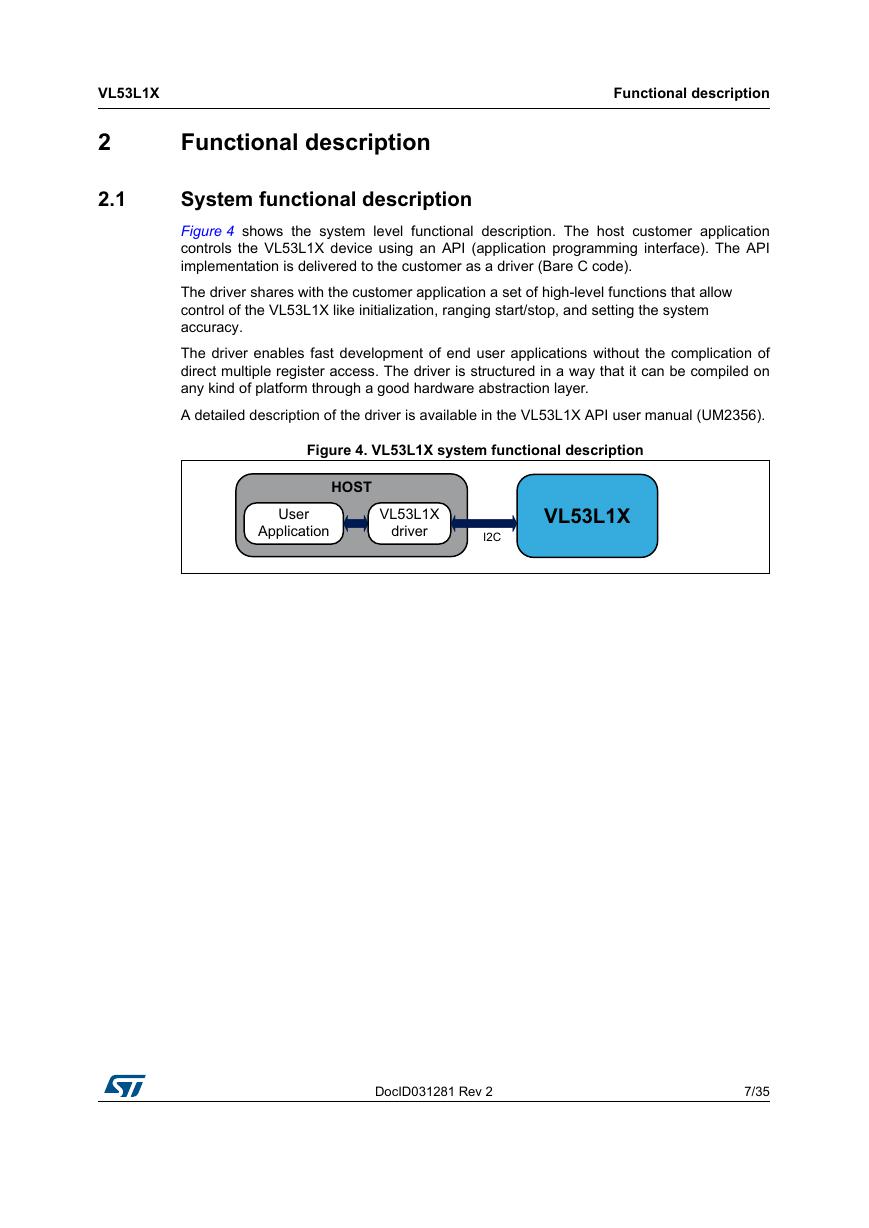
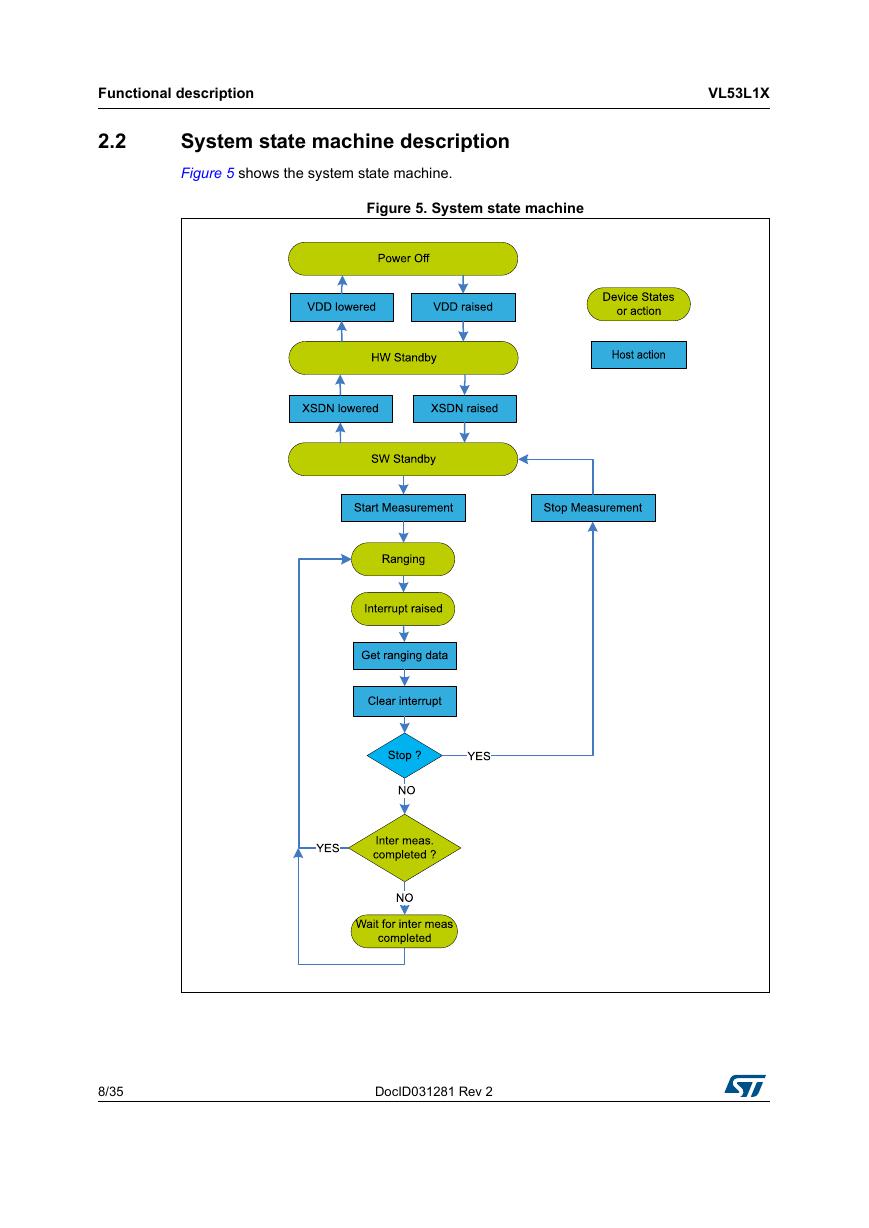








 V2版本原理图(Capacitive-Fingerprint-Reader-Schematic_V2).pdf
V2版本原理图(Capacitive-Fingerprint-Reader-Schematic_V2).pdf 摄像头工作原理.doc
摄像头工作原理.doc VL53L0X简要说明(En.FLVL53L00216).pdf
VL53L0X简要说明(En.FLVL53L00216).pdf 原理图(DVK720-Schematic).pdf
原理图(DVK720-Schematic).pdf 原理图(Pico-Clock-Green-Schdoc).pdf
原理图(Pico-Clock-Green-Schdoc).pdf 原理图(RS485-CAN-HAT-B-schematic).pdf
原理图(RS485-CAN-HAT-B-schematic).pdf File:SIM7500_SIM7600_SIM7800 Series_SSL_Application Note_V2.00.pdf
File:SIM7500_SIM7600_SIM7800 Series_SSL_Application Note_V2.00.pdf ADS1263(Ads1262).pdf
ADS1263(Ads1262).pdf 原理图(Open429Z-D-Schematic).pdf
原理图(Open429Z-D-Schematic).pdf 用户手册(Capacitive_Fingerprint_Reader_User_Manual_CN).pdf
用户手册(Capacitive_Fingerprint_Reader_User_Manual_CN).pdf CY7C68013A(英文版)(CY7C68013A).pdf
CY7C68013A(英文版)(CY7C68013A).pdf TechnicalReference_Dem.pdf
TechnicalReference_Dem.pdf